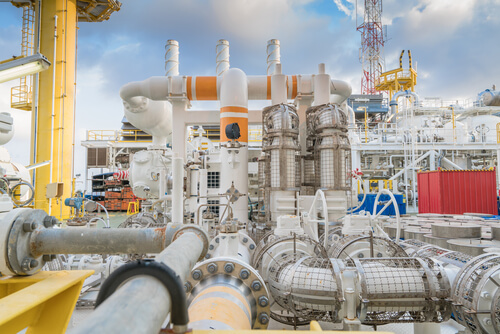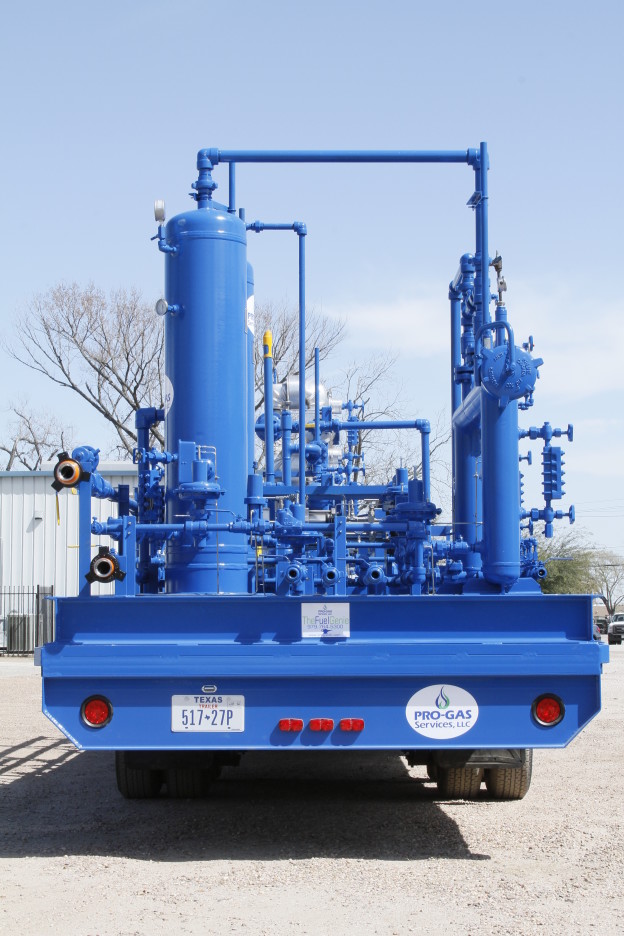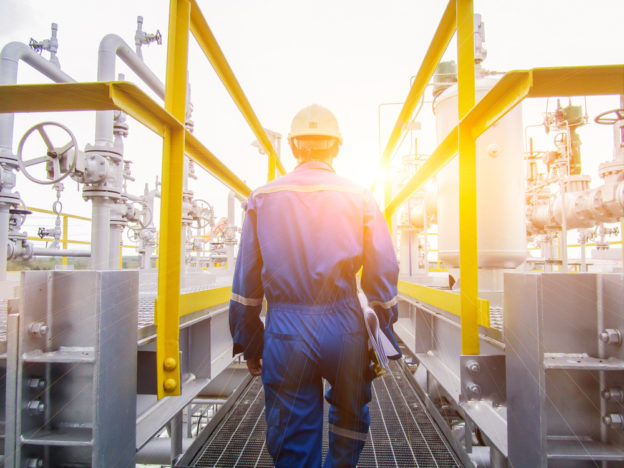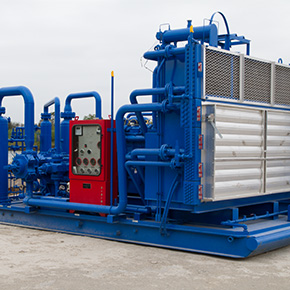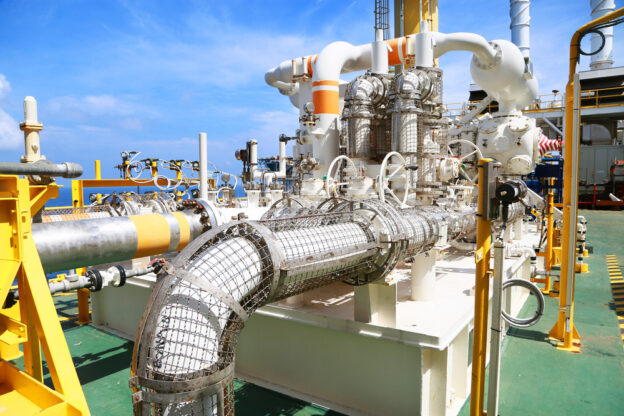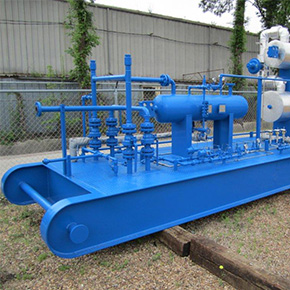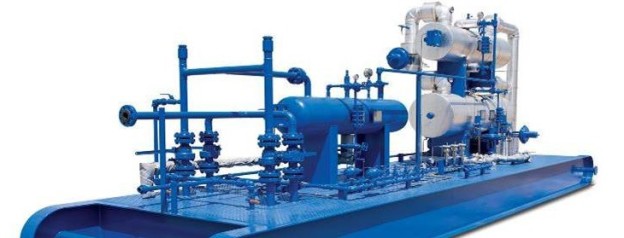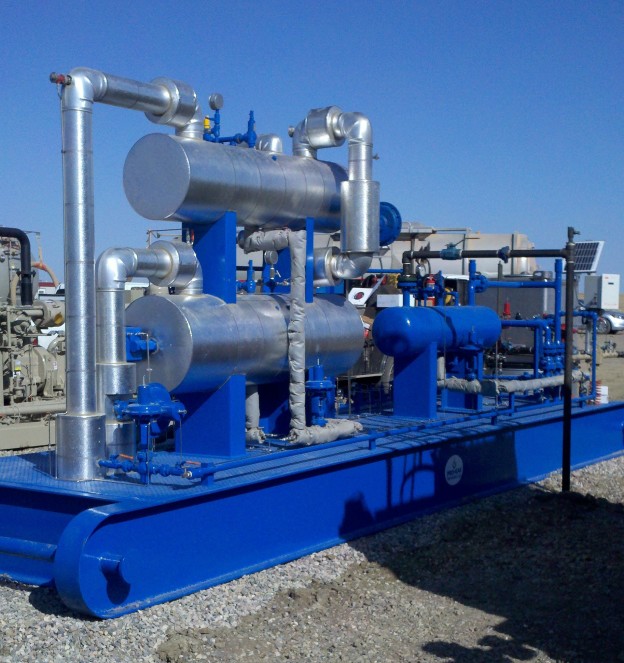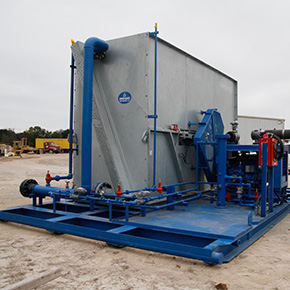In natural gas processing, the purity of the gas stream isn’t just a preference — it’s a fundamental requirement. Before natural gas can embark on its journey through pipelines and into homes and industries, it must be meticulously stripped of impurities, particularly liquids and solids. This critical initial step, gas separation, lays the foundation for efficient and safe downstream operations. For decades, our industry has relied on various separation technologies, but none have seen as significant an evolution of natural gas dehydrators or as dramatic an improvement in performance as the modern filter separator.
In this comprehensive blog post, we will delve into the transformative power of advanced filter separators and how they are revolutionizing gas separation efficiency. We will explore the inherent challenges in gas separation, the mechanics of these innovative devices, and the tangible benefits they bring, including enhanced operational reliability, reduced maintenance, and superior product quality. Join us as we uncover the specific components, delve into troubleshooting common issues, and look ahead to the future of these indispensable pieces of equipment in the natural gas industry.
Understanding the Imperative of Gas Separation
Before we explore the intricacies of advanced filter separators, let us first establish why gas separation is an absolutely critical step in natural gas processing.
Impurities | Why Clean Gas Matters
Natural gas, as it emerges from the wellhead, is rarely a pristine, single-phase stream of methane. Instead, it is a complex mixture often saturated with water vapor, entrained liquid hydrocarbons (condensate), and solid particulates like sand, rust, and drilling debris. These impurities, if not diligently removed, pose significant threats to the entire natural gas value chain:
- Corrosion and Erosion: Water, especially when combined with CO2 or H2S, can lead to corrosive environments within pipelines and equipment. Solid particulates can cause erosive wear on valves, compressors, and instrumentation.
- Hydrate Formation: Under certain pressure and temperature conditions, water can combine with natural gas components to form solid ice-like structures called hydrates, which can severely restrict or completely block flow in pipelines.
- Reduced Efficiency: Liquids in the gas stream can lead to slugging in pipelines, reducing throughput and increasing pressure drop. Solids can foul heat exchangers, restrict flow through orifices, and reduce the efficiency of compressors.
- Product Quality: Sales gas specifications demand very low levels of water and hydrocarbon liquids. Failure to meet these specifications can result in penalties, rejection of gas, and even damage to end-user equipment.
- Environmental Concerns: Uncontrolled emissions of hydrocarbons due to leaks or equipment malfunction, often exacerbated by fouling, are a growing environmental concern.
Effective gas separation is therefore not just about operational efficiency; it is about safety, environmental stewardship, and economic viability.
Traditional Separation Methods
Historically, the industry has relied on various types of separators to remove liquids and solids. These include:
- Slug Catchers: Large vessels designed to handle intermittent slugs of liquids, often found at the inlet of processing plants.
- Two-Phase and Three-Phase Separators: These vessels use gravity and often internal baffling to separate gas from liquids (two-phase) or gas from oil and water (three-phase). They are effective for bulk separation but often leave fine mists and particulates.
- Knockout Drums: Simple vessels designed to remove larger liquid droplets from the gas stream.
While these traditional methods are foundational, they often fall short when it comes to achieving the very high purity levels required by modern pipeline specifications and downstream processes, particularly when dealing with fine mists and microscopic solid particles. This is where the advanced filter separators enter the picture, taking gas purification to a new level.
How Advanced Filter Separators Work
The true genius of advanced filter separators lies in their multi-stage approach, combining various principles of separation to achieve superior results. We typically employ these units as a crucial component in downstream processing, often preceding dehydration units or compressors, or acting as final polishers before pipeline entry.
The Multi-Stage Advantage | Beyond Simple Separation
Unlike basic separators, advanced filter separators are engineered with a series of integrated stages, each designed to tackle different types and sizes of impurities. This tiered approach ensures maximum removal efficiency. The fundamental components of a natural gas dehydrator can also be observed in these systems.
- First Stage | Coalescing Filtration: The initial stage often involves a coalescing filter element. As the wet, contaminated gas flows through this specially designed media (typically fiberglass or synthetic fibers), smaller liquid droplets and aerosols collide and combine, or “coalesce,” into larger droplets. These larger droplets are then more easily separated by gravity. This is particularly effective for fine liquid mists that would otherwise remain entrained in the gas stream.
- Second Stage | Vane Mist Extraction or Cyclone Separation: Once the larger liquid droplets have formed, the gas stream enters a second stage designed for bulk liquid removal. This can involve:
- Vane Mist Extractors: These are typically corrugated plates or vanes that force the gas to change direction rapidly. The heavier liquid droplets, due to their inertia, cannot follow the sharp turns of the gas and impact the vane surfaces, where they coalesce further and drain away.
- Cyclone Separators: Gas enters a cylindrical chamber tangentially, creating a vortex. Centrifugal force throws the heavier liquid droplets and solid particles to the outer walls, where they slide down and are collected.
- Optional Third Stage | Particulate Filtration: For applications requiring extremely clean gas, a third stage may be incorporated, often using high-efficiency cartridge filters to capture even the finest solid particulates down to sub-micron sizes. This ensures protection for sensitive downstream equipment.
The Design Philosophy | Engineering for Performance
The design of advanced filter separators is a testament to precision engineering. Key considerations include:
- Flow Dynamics: Internal baffling and inlet/outlet configurations are optimized to ensure smooth flow distribution across the filter elements and to minimize turbulence, which could re-entrain separated liquids.
- Material Selection: Construction materials are carefully chosen to withstand the corrosive and erosive nature of raw natural gas, ensuring longevity and safety. Stainless steel and specialized coatings are common.
- Maintenance Accessibility: We prioritize designs that allow for easy access to filter elements for inspection and replacement, minimizing downtime during maintenance.
- Pressure Vessel Standards: All filter separators are designed and constructed to adhere to stringent industry pressure vessel codes (e.g., ASME Section VIII) to ensure safe operation under high pressures.
By integrating these stages and adhering to rigorous design principles, advanced filter separators offer a level of purity that traditional methods simply cannot match, leading to significant improvements in overall process efficiency.
Why Advanced Filter Separators are Indispensable
The adoption of advanced filter separators brings a cascade of operational and economic advantages that are critical for modern natural gas processing facilities.
Enhanced Downstream Protection
One of the most significant benefits is the unparalleled protection they offer to downstream equipment. By effectively removing even microscopic liquid droplets and solid particles, filter separators prevent:
- Fouling of Dehydrators: Liquids and solids entering glycol dehydrators can cause foaming, glycol degradation, and reduced dehydration efficiency, leading to higher operating costs and potential shutdowns. The precise separation capability truly complements the evolution of natural gas dehydrators.
- Damage to Compressors: Liquid slugs can cause severe damage to compressor impellers and seals. Solids can lead to erosion and premature wear.
- Contamination of Amine Units: Liquids and solids can cause foaming and fouling in amine sweetening units, impacting their ability to remove acid gases (H2S and CO2).
- Corrosion in Cryogenic Plants: Water and heavier hydrocarbons not removed upstream can freeze and cause blockages in cryogenic gas processing plants, leading to costly defrosting operations or even damage.
- Reduced Catalyst Life: In processes involving catalysts, even trace impurities can poison or deactivate the catalyst, leading to reduced efficiency and costly replacement.
Improved Operational Efficiency
Cleaner gas translates directly to more efficient and reliable operations:
- Stable Processing: With fewer impurities, downstream processes run more smoothly and consistently, reducing fluctuations and improving process control.
- Reduced Maintenance Costs: Less fouling and erosion mean less frequent repairs and replacements of expensive equipment, significantly lowering operational expenditures.
- Increased Uptime: By preventing unplanned shutdowns due to equipment malfunction or hydrate formation, filter separators contribute to higher facility uptime and production rates.
- Lower Operating Pressure Drop: Cleaner filter elements and pipelines lead to a lower pressure drop across the system, reducing the energy required for compression.
Superior Product Quality
For natural gas to be marketable, it must meet stringent quality specifications. Advanced filter separators play a crucial role in achieving this:
- Meeting Pipeline Specifications: They ensure that the gas delivered to pipelines meets strict dew point and hydrocarbon liquid content requirements, avoiding penalties and ensuring market access.
- Enhanced NGL Recovery: By efficiently separating liquids from the gas stream, they can improve the purity and recovery of valuable Natural Gas Liquids (NGLs).
- Reduced Flaring and Emissions: Better separation means fewer process upsets that might lead to flaring, contributing to a reduced environmental footprint.
The strategic deployment of advanced filter separators is therefore a key differentiator for any natural gas processing operation aiming for peak performance and profitability.
Implementation and Maintenance | Maximize Your Investment
To fully leverage the capabilities of advanced filter separators, proper selection, installation, and ongoing maintenance are paramount.
Selecting the Right Filter Separator
Choosing the appropriate advanced filter separator involves careful consideration of several factors:
- Gas Flow Rate and Pressure: The separator must be sized correctly to handle the maximum expected gas flow rate and operating pressure. Undersizing can lead to inefficient separation and high-pressure drops.
- Impurity Loading: Understanding the type and concentration of liquids (water, condensate) and solids (sand, rust, scale) in the inlet gas stream is critical for selecting the appropriate filter media and separation stages.
- Desired Outlet Purity: The required dew point and particulate size removal efficiency will dictate the complexity and type of filter elements needed.
- Operating Temperature: The design must account for the minimum and maximum operating temperatures to ensure material compatibility and prevent issues like freezing.
- Space Constraints: Physical footprint and accessibility for maintenance are practical considerations during selection.
- Integration with Existing Systems: The filter separator must seamlessly integrate with upstream and downstream equipment, including the evolution of natural gas dehydrators and compressors.
We, at Pro-Gas LLC, offer expert consultation to help our clients select the optimal filter separator configuration for their specific needs, ensuring a tailored and highly effective solution.
Installation Best Practices
Proper installation is as crucial as the selection process. Key considerations include:
- Level Foundation: The separator must be installed on a level, stable foundation to ensure proper liquid drainage and even flow distribution.
- Proper Piping: Inlet and outlet piping should be designed to minimize turbulence and ensure even gas distribution across the filter elements. Adequate support for piping is also essential.
- Drainage and Venting: Effective liquid drainage systems (e.g., level controls and dump valves) are vital. Proper venting is also necessary for safe operation and maintenance.
- Bypass Lines: Installing bypass lines allows for continued operation during filter element replacement or maintenance, minimizing downtime.
Ongoing Maintenance and Monitoring
Even the most advanced equipment requires diligent maintenance. For advanced filter separators, this typically involves:
- Differential Pressure Monitoring: We continuously monitor the differential pressure across the filter elements. A rising differential pressure indicates that the filters are becoming clogged with impurities and need to be cleaned or replaced.
- Regular Filter Element Inspection and Replacement: The frequency of replacement depends on the impurity loading in the gas, but regular visual inspections are always recommended. Following manufacturer guidelines for filter life is crucial.
- Liquid Level Management: Ensuring proper operation of liquid level controls and dump valves to prevent liquid carryover downstream.
- Vessel Inspection: Periodic internal inspections of the separator vessel for corrosion, erosion, or damage to internal components (e.g., vanes, baffles).
- Pressure Relief Valve Testing: Regular testing of pressure relief valves to ensure they are functioning correctly for safety.
By adhering to these maintenance protocols, we help our clients maximize the lifespan and efficiency of their advanced filter separators, safeguarding their investment. Consider linking to [external resource] for detailed best practices on filter separator maintenance.
The Future of Separation | Innovations on the Horizon
The continuous demand for cleaner gas and more efficient operations drives ongoing innovation in separation technology. The evolution of natural gas dehydrators continues hand-in-hand with these advancements.
Smart Separation — Automation and Predictive Maintenance
The integration of advanced sensors and data analytics is poised to transform how we manage filter separators.
- Real-time Performance Monitoring: Sensors can provide continuous data on differential pressure, liquid levels, and even the “health” of filter elements, allowing for proactive intervention.
- Predictive Maintenance: By analyzing historical data and real-time trends, AI-driven systems can predict when filter elements will need replacement, optimizing maintenance schedules and minimizing unplanned downtime.
- Automated Control: Advanced control systems can automatically adjust operating parameters to optimize separation efficiency based on varying inlet conditions.
Novel Materials and Designs
Research and development are focusing on creating even more efficient and durable separation media and vessel designs.
- Enhanced Coalescing Media: Developing filter media with improved coalescing properties and greater dirt-holding capacity, leading to longer service life and reduced replacement frequency.
- Compact Designs: Innovations in internal baffling and flow paths could lead to more compact and lighter filter separators, ideal for offshore platforms or space-constrained facilities.
- Self-Cleaning Systems: Exploration of technologies that could enable in-situ cleaning or regeneration of filter elements, further reducing maintenance interventions.
- Integration with Other Technologies: Combining separation with other processes, such as heating or cooling, in a single, integrated unit for greater efficiency.
These emerging trends underscore a future where gas separation is not just effective but also highly intelligent, autonomous, and sustainable. The journey of improving gas separation efficiency is an ongoing one, and advanced filter separators are undeniably at the forefront of this critical technological advancement.
Call on Pro-Gas | Your Natural Gas Partners
The journey of natural gas from the reservoir to the consumer is a complex one, fraught with challenges presented by impurities. The evolution of natural gas dehydrators and their complementary technologies, particularly advanced filter separators, represent a monumental stride in overcoming these challenges. By moving beyond traditional, less precise methods, these multi-stage separation units have fundamentally transformed gas processing, ensuring unprecedented levels of purity.
At Pro-Gas LLC, we recognize the indispensable role of advanced filter separators in safeguarding critical downstream equipment, enhancing operational efficiency, and guaranteeing the superior quality of natural gas. Our expertise in selecting, installing, and maintaining these vital systems ensures that our clients in the Dallas area and beyond operate with maximum reliability, reduced costs, and a minimized environmental footprint. As the industry continues to innovate, we remain committed to bringing the latest and most effective separation technologies to our partners, ensuring their success in an ever-evolving energy landscape.
Are you experiencing challenges with gas stream impurities, or are you looking to upgrade your separation processes to improve efficiency and protect your valuable assets? Contact Pro-Gas LLC today. Our team of experts is ready to assess your specific needs and design a custom solution utilizing the most advanced filter separators available. Let us help you achieve unparalleled gas purity, optimize your operations, and ensure the long-term reliability of your natural gas infrastructure. Reach out to us through our website or by phone to schedule a consultation.
FAQ | Frequently Asked Questions About Advanced Filter Separators
Q. What are advanced filter separators and how do they differ from traditional separators?
Advanced filter separators are multi-stage separation units designed to remove fine liquid droplets (aerosols) and solid particulates from natural gas, in addition to bulk liquids. Unlike traditional separators which primarily rely on gravity, advanced filter separators incorporate coalescing filter elements and often vane mist extractors or cyclone stages to achieve much higher levels of purity, protecting downstream equipment like the evolution of natural gas dehydrators.
Q. Why is the removal of fine liquid droplets and solids so important in natural gas processing?
The removal of fine liquid droplets and solids is crucial because even small amounts of these impurities can cause significant problems. They can lead to corrosion and erosion of pipelines and equipment, foul heat exchangers, damage compressors, cause foaming and degradation in amine and glycol units, and prevent the gas from meeting strict pipeline quality specifications, leading to operational inefficiencies and financial penalties.
Q. What are the key components of a natural gas dehydrator-complementing filter separator?
While the components vary, a typical advanced filter separator will include an inlet section for initial bulk separation, coalescing filter elements to combine fine liquid droplets, and a secondary separation stage such as vane mist extractors or cyclonic elements to remove the now-larger liquid droplets. Some advanced units also include a final stage for high-efficiency particulate filtration.
Q. How do advanced filter separators contribute to the efficiency of natural gas dehydration?
By effectively removing free liquids and aerosols upstream, advanced filter separators significantly improve the efficiency and longevity of natural gas dehydration units (such as glycol dehydrators). They prevent liquid slugs from entering the dehydrator, which can cause foaming, glycol degradation, and reduce the dehydrator’s ability to remove water vapor effectively, thus complementing the evolution of natural gas dehydrators.
Q. How often should filter elements in an advanced filter separator be replaced?
The replacement frequency of filter elements depends largely on the impurity loading in the incoming gas stream. We recommend monitoring the differential pressure across the filter elements; a significant increase indicates that the filters are becoming clogged and need to be inspected or replaced. Regular preventative maintenance schedules, combined with real-time monitoring, help optimize replacement intervals.


